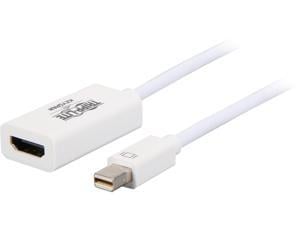

- Active thunderbolt to hdmi adapter drivers#
- Active thunderbolt to hdmi adapter full#
- Active thunderbolt to hdmi adapter Bluetooth#
Most DP to HDMI adapters on the market are passive, relying on the host to fall back to native HDMI signaling on its DisplayPort output, but Thunderbolt 3 can't do that, and I don't believe any of the TB3 to Dual DP adapters on the market do either. The "active" part means that the adapter itself can convert a DisplayPort signal to HDMI internally. If you need two 4K 60 Hz displays simultaneously, you would need a Thunderbolt 3 to Dual DisplayPort adapter and then a pair of active DisplayPort to HDMI adapters that support 4K 60 Hz.
Active thunderbolt to hdmi adapter full#
not being required to carry USB traffic at the same time, as it would be with a dock) has the bandwidth of a full DisplayPort 1.2 output, which is enough bandwidth for 4K 60 Hz. USB Type-C when used exclusively for video (i.e.

Active thunderbolt to hdmi adapter drivers#
If you need HDR, that is NOT at the moment no laptop on the market that I'm aware of supports HDR at this time, although it's also such a problem with Windows and GPU drivers right now that it's hardly worth it, but that's another story.īut if you only need 4K 60 Hz and only from a single display, the simplest way to achieve that is with a USB-C (not Thunderbolt 3) to HDMI 2.0 adapter. In terms of HDMI 2.0, it depends on what you're trying to do there. Second, Thunderbolt 3 to the best of my knowledge only carries DisplayPort 1.2, even if the GPU supports DisplayPort 1.4, and it also only carries DisplayPort it will not natively output HDMI, DVI, or VGA. There are GPUs in PCs that support far more displays than the system does because the OEM chose not to wire as many display outputs as possible to the GPU, for example. A Plugable USB 3.0 DisplayLink docking station or sound-enabled display adapter will appear as Plugable AudioFirst, be aware that just because a GPU supports something, it does not mean that it was implemented in the rest of the system.Alternatively, after selecting Open Sound Settings, use the dropdowns under the Input header.Windows 10/11-Select Open Sound Settings then click the link under 'Related Settings' for Sound Control Panel, then click the Recording tab.The Sound window will open with the Recording tab highlighted Windows 7/8.x-Select Recording Devices.
Active thunderbolt to hdmi adapter Bluetooth#
Please see our pairing and configuration guide for Bluetooth devices. A check mark should appear next to your device, and sound should now play through it



 0 kommentar(er)
0 kommentar(er)
